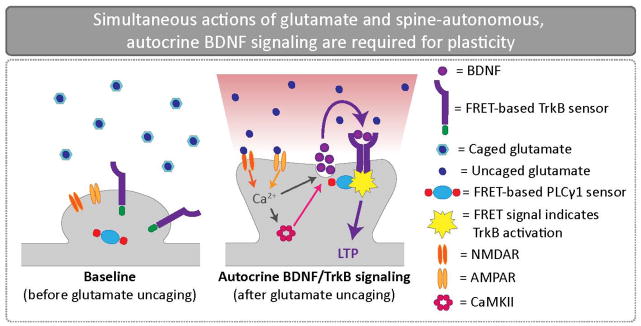Figure 2.
Simultaneous actions of glutamate and spine-autonomous, autocrine BDNF signaling are required for plasticity. To visualize rapid, autocrine BDNF signaling at CA1 synapses, a TrkB fluorescence resonance energy transfer (FRET)-based sensor was coupled with glutamate uncaging and two photon imaging. Glutamate uncaging revealed time-locked BDNF release from individual spines and subsequent postsynaptic TrkB activation on the same spine. BDNF release is also dependent upon NMDAR and CaMKII activation. This rapid, autocrine BDNF signaling mechanism is required for both structural and functional plasticity.

